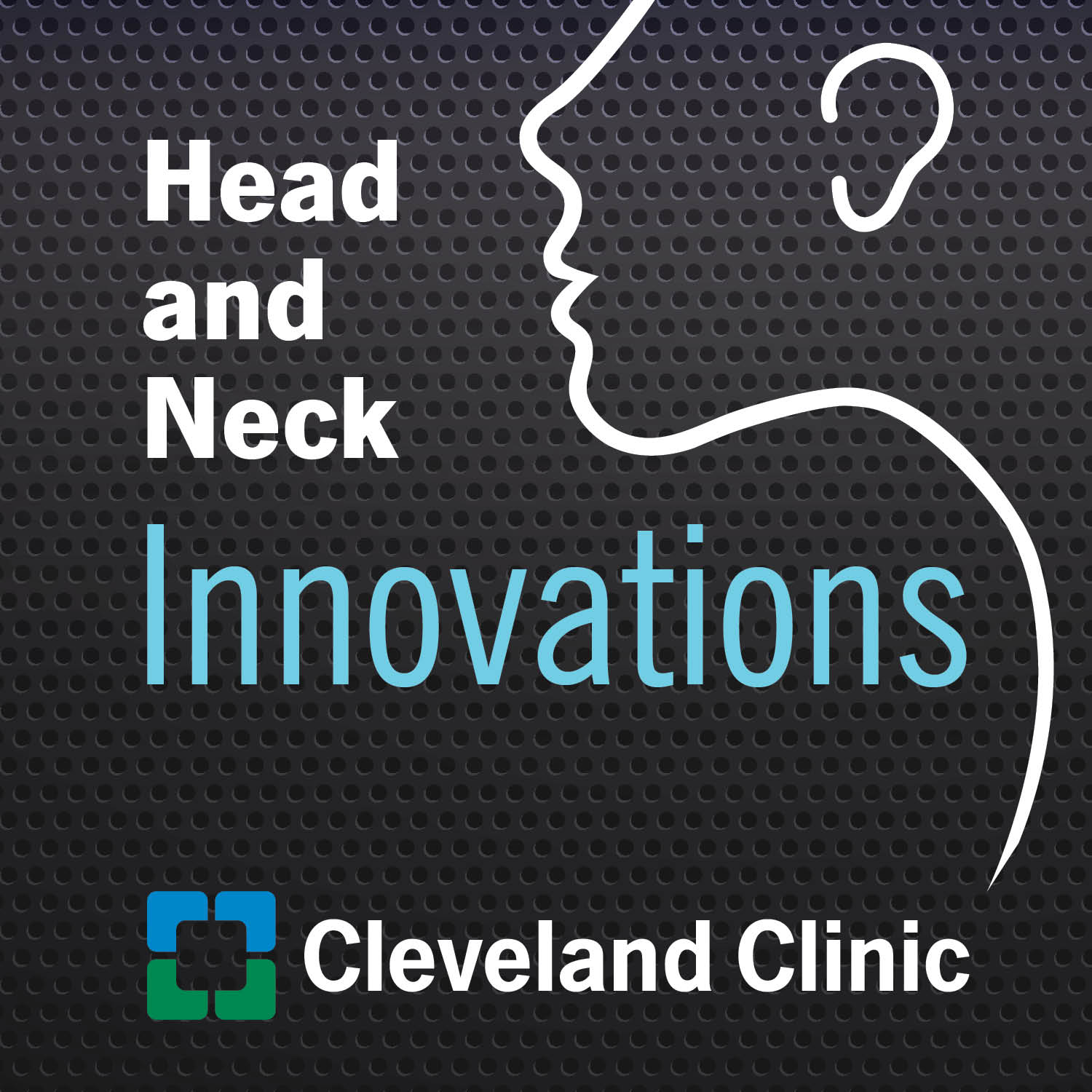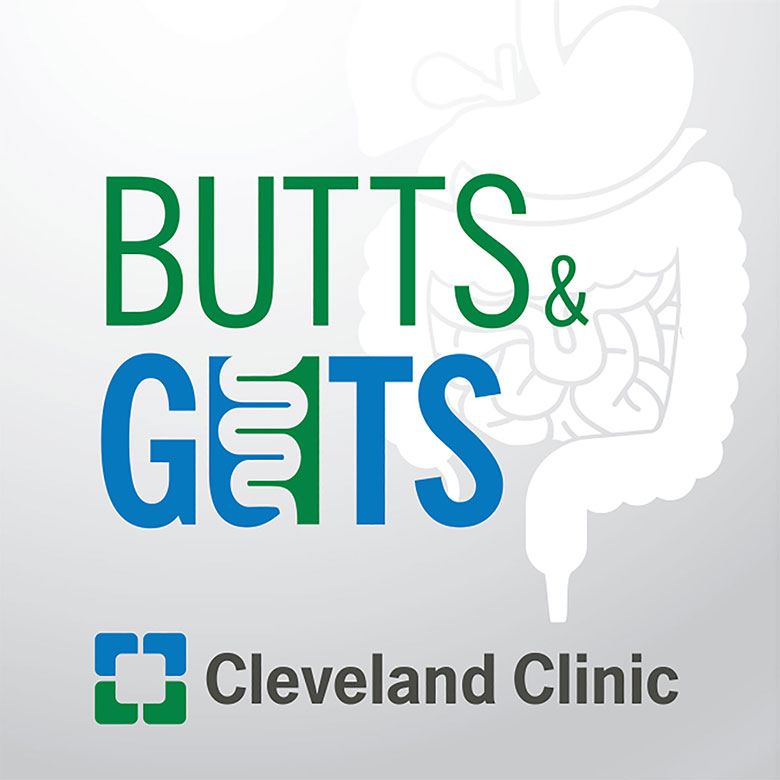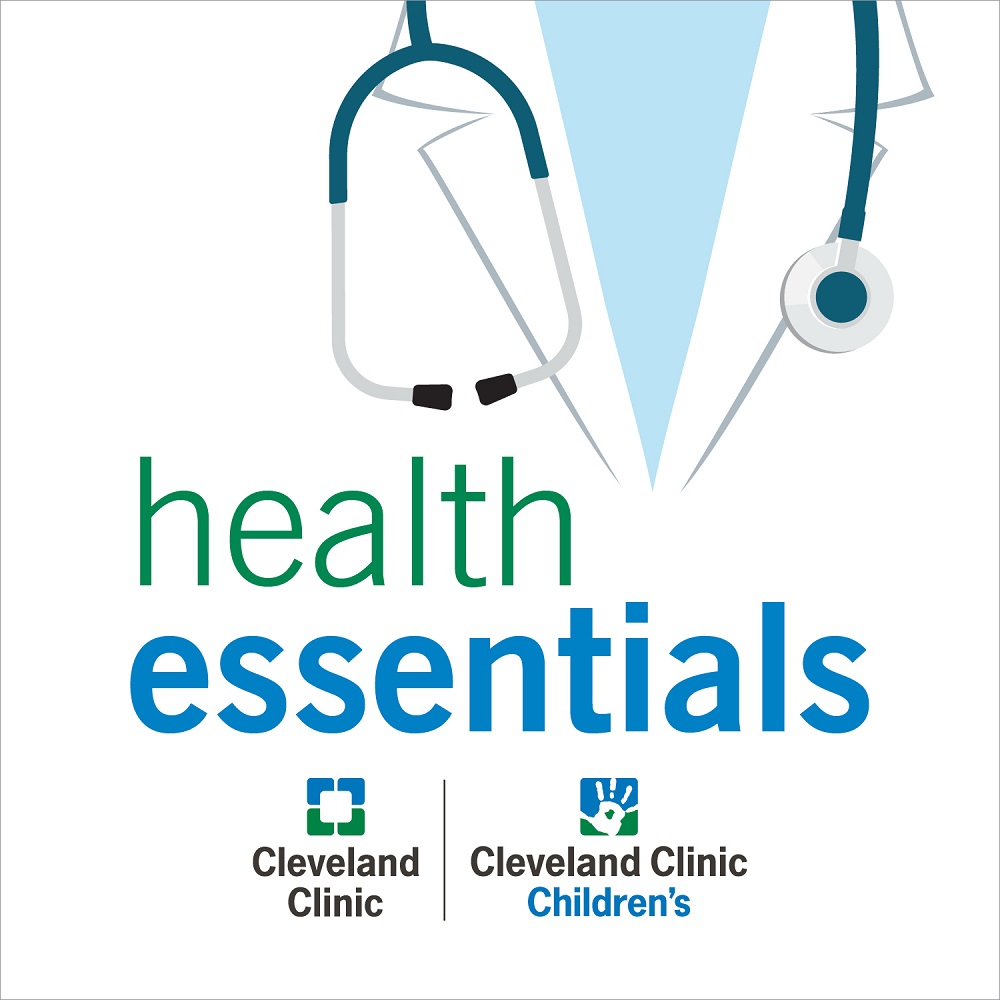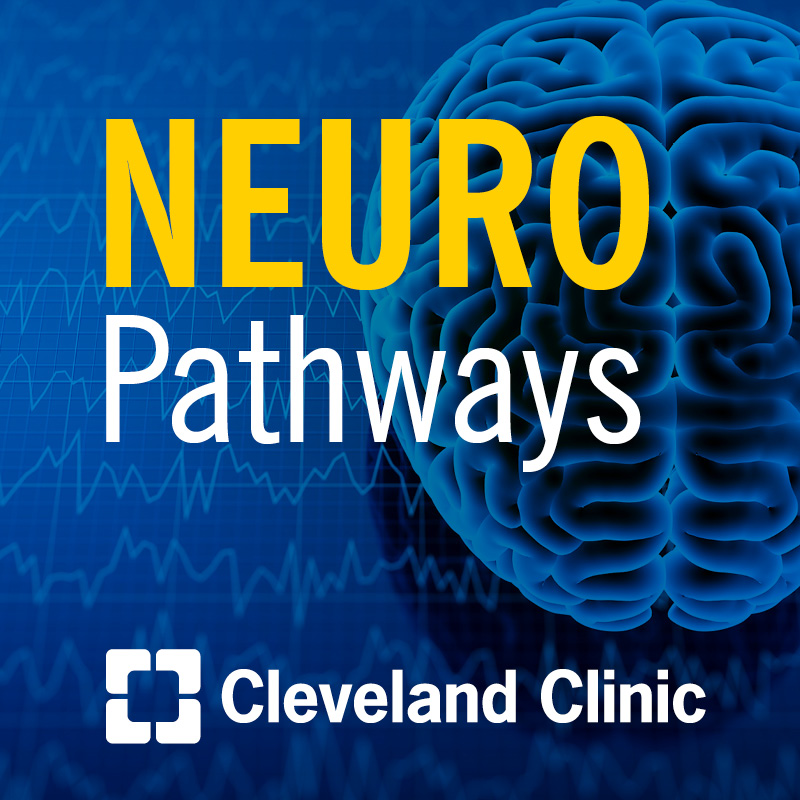Innovations in Nasal Reconstruction
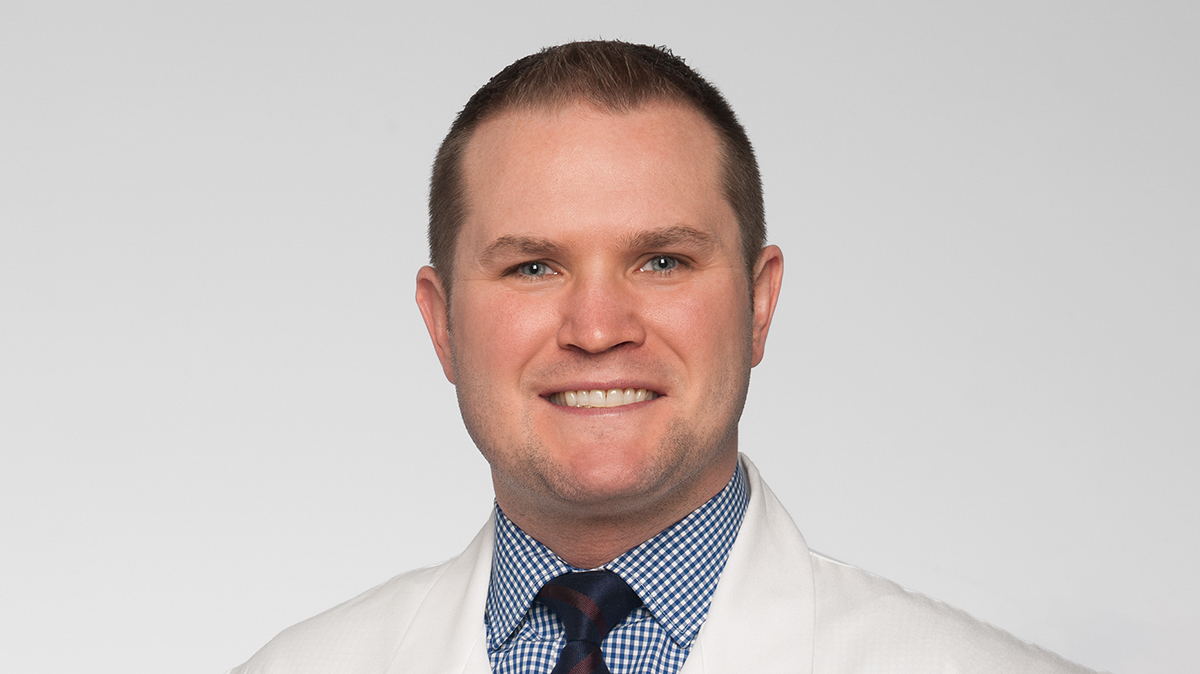
Facial plastic and reconstructive surgeon Dane Genther, MD joins to discuss a novel technique to repair nasal septal perforation. Dr. Genther also looks ahead to new innovations in preservation rhinoplasty and facial reanimation.
Subscribe: Apple Podcasts | Podcast Addict | Spotify | Buzzsprout
Innovations in Nasal Reconstruction
Podcast Transcript
Paul Bryson: Welcome to Head and Neck Innovations, a Cleveland Clinic podcast for medical professionals exploring the latest innovations, discoveries, and surgical advances in otolaryngology - head and neck surgery.
Thanks for joining us for another episode of Head and Neck Innovations. I'm your host, Paul Bryson, Director of the Cleveland Clinic Voice Center. You can follow me on X, formerly Twitter, @PaulCBryson, and you can get the latest updates from Cleveland Clinic Otolaryngology-Head and Neck Surgery by following @CleClinicHNI on X. That's @CleClinicHNI. You can also find us on LinkedIn at Cleveland Clinic Otolaryngology - Head and Neck Surgery, and Instagram at Cleveland Clinic Otolaryngology.
Today I'm happy to be joined by my guest and colleague, Dr. Dane Genther, a facial plastic and reconstructive surgeon here at the Cleveland Clinic. Dr. Genther, welcome to Head and Neck Innovations.
Dane Genther: Thanks for having me, Paul.
Paul Bryson: Well, let's start by having you share some background on yourself for our listeners, where you're from, where you trained, and how you came to Cleveland Clinic.
Dane Genther: Sure. So I grew up in southwest Michigan, the youngest of three brothers in a small town at a pretty normal childhood. I went to Central Michigan University for college where I studied chemistry, biology, and math. Found my way to medicine and then I ended up attending University of Michigan Medical School in Ann Arbor. So there for four years following that, I moved to Baltimore, Maryland to train in otolaryngology-head and neck surgery at Johns Hopkins. When I was there, I undertook the seven year track, which include included two years of dedicated research sponsored by the NIH. An added benefit of that seven year track was the last year of training was an enfolded fellowship where I was able to study additional facial plastic surgery techniques, including facial reanimation and free flap reconstruction. And then following that I continued for another year of formal facial plastic surgery training at OHSU in Portland, Oregon. And then I began at the Cleveland Clinic in fall of 2018.
Paul Bryson: Well, it's great to have you here. It's been great to see your practice sort of evolve and then such a broad background and a great depth of training. We're going to talk a little bit today about your nasal work. So can you tell us a little bit about the research that's been published regarding a new technique for nasal septal repair?
Dane Genther: Sure, I'd be happy to. So around the time that I started at the Cleveland Clinic, I was looking for a new way to fix septal perforation. So it's a fairly common problem. It's basically the midline of the nose is the septum and it's a hole within that structure that creates a lot of issues for patients, including whistling, nasal obstruction, crusting, bleeding among others, and techniques to date have really been limited in one, their efficacy, but also quite difficult and onerous in terms of how they're accomplished. So the most common techniques to fix a perforation are flap techniques. So you're mobilizing tissue within the nose, you're rotating and moving tissue around trying to bring it together to close that hole. But these are very difficult in that you're operating a very narrow space within the nose, often very deep in the nose. So it makes it difficult. And these surgeries have a success rate anywhere from typically 60 to 90%, which means 40 to 10% of these patients don't heal completely or have to have another surgery.
So I was looking at options for an additional way to fix these, and I relied on a couple of other previous techniques that I've done. So we've talked about this before on other podcasts, but the a ALT fascia lata free flap. This flap really gets its vascularity from the perifascial tissue, and you can see this, and there's other grafts within the body which also have this type of perifascial tissue, including temporalis fascia, which is what we use for this technique.
So through a small incision in the hairline, just above the ear, we harvest a piece of temporalis fascia, we can get up to 6x6 centimeters. We remove that, close the incision, which often heals invisibly because it's within the hair. And then we take this graft, secure it to an absorbable material, and we put it in between the two sides of the perforation without the need for any local flaps whatsoever. So the procedure itself typically takes less than two hours, and compared to some of these other techniques which are onerous and have a moderate success rate, our success rate has been 97% so far. And we've done this including for quite large perforations, which are progressively more difficult to fix with these flap techniques, but quite easy with this technique.
Paul Bryson: Yeah, I mean that's fantastic. And like you said earlier, a perforation can be kind of common. I want to get into a case study about it, but can you tell the listener, if we have some potential patients listening, how do you get a septal perforation? What are the common stories that you hear?
Dane Genther: Yeah, so it is fairly common. So 1 to 2% of the population experienced one at some point. The most common is previous surgery, trauma, intranasal drug use. Those are the most common ones that are good candidates for repair. There's other types of conditions such as autoimmune conditions where your body basically damages that cartilage and soft tissue, and perforation forms. Those can be more difficult to fix because the underlying etiology is that that tissue is unhealthy and inflamed, but the other, especially traumatic, whether it's from a car accident, from digital manipulation or from previous surgery, are very amenable to these techniques.
Paul Bryson: Yeah. Can you kind of describe a success story that you've been involved with, how you approached it and discuss the outcome?
Dane Genther: Sure. So yeah, I have one very memorable patient. So a couple of years ago I had a patient come in with a very large perforation, two by four and a half centimeters. This patient had gone all over the country, seen several prominent rhinoplasty surgeons, all of whom offered her no more than a 50% success rate, and she came to me. We discussed the technique, told her that of course, while nothing's ever guaranteed, I offered her a success rate, likely success rate higher than what she's previously offered. So we elected to go forward with surgery.
We performed her surgery with special care given the size of the perforation. So every step, we took our time to make it perfect, make sure all the tissue edges were healthy, the fascia was healthy, and everything went according to plan. Following surgery, we placed splints inside the nose. In this case, we left them longer than usual, typically two, but we left them for four in this case. Then we took out her splints, her septum looked perfect. You could literally not tell that there was a perforation there, and she was thrilled. And when I showed her the endoscopic exam, she literally bawled her eyes out and was so happy she'd been living with this for years, And this was the first time she ever thought she would be done with it. So it was pretty incredible for both of us.
Paul Bryson: Yeah. Well, congratulations. That's awesome. So this was a patient that had a pretty large defect, and I imagine you have a wide range of defects. How do you navigate this balance between aesthetics and function in the nose?
Dane Genther: Yeah, so that's really the issue. At the heart of facial plastic surgery, everything is balancing form and function. A lot of the procedures that we do are either purely for cosmetic purposes or for functional purposes, but you have to take care during those surgeries not to affect the other. You don't want to do a cosmetic surgery and then affect their function or a functional surgery and worsen their cosmesis. And then of course, there's a lot of operations we do that work on both. Particularly rhinoplasty is probably the most common that we explicitly modify form and function separately. We do this very often and we can take care of the breathing within the nose and the outside appearance to the patient's liking. So that's really the balance of all the surgeries that we do is balancing form and function.
Paul Bryson: So as you refine this technique, what's on the horizon as far as additional research or any ongoing things where you're looking to refine kind of your great results already?
Dane Genther: So a few things. So within the septal perforation arena, sometimes patients don't have the temporalis fascia that we often use. I've seen two patients like this, in which case we use free fascia lata grafts. The surgery is a little bit different in that we use a single layer as opposed to a dual layer, but it's similar concept. We believe that perifascial areolar tissue, which I believe vascularize as quickly and allows for this really quick healing. There's other literature that kind supports that in that these grafts take particularly well because the blood vessels within sort of recanalize. So I think looking further into that, and then other options for grafts.
Other areas that are kind of hot topics now and are changing almost daily in terms of refinement of techniques and methods of taking care of patients, one is preservation rhinoplasty, which is different than current rhinoplasty techniques in that it focuses on maintaining certain structures within the nose that other techniques often remove or modify. And then particular attention is paid to leaving the dorsum, the nasal bridge unmodified. And this allows you to essentially shape the structures underneath and you can pull down that dorsum to flatten it as opposed to take off the top sharply. The great benefit of this is sometimes quicker recovery time, but also the irregularities that often appear on the dorsum due to the way that these surgeries are typically performed is lessened. So healing is quicker, there's less swelling, and the chance of having a good aesthetic outcome years down the line is particularly improved. And actually, a colleague and I are traveling to Fort Lauderdale this weekend to go to a preservation rhinoplasty course that's going to be 30 hours of lecture and cadaver lab where we get to learn the most modern techniques. Again, this is changing every year literally, you go to the meetings and there's new things that people are doing and talking about. So we're going to learn from the best in the world and bring all that back to our patients.
The other area that's particularly rife for innovation facial reanimation. So this has been an evolving field for the past 20 to 30 years. The highest level of surgery for this is a gracilis free flap, which historically has just been done as a single vector, meaning that you get one method of pull on your smile, which is not particularly natural. But we've been increasing the number of vectors, and most recently we've been routinely performing tri-vector or three vector surgery, which restores additional vectors of smile. So the second vector gets to restore the zygomaticus muscles, so it pulls the lip up, it looks more natural. This third vector’s slung under the eyelid and allows for lower eyelid wrinkling with smile, which is referred as a Duchenne smile. So when you smile naturally, your lower eyelids wrinkle, and these patients otherwise lack that. So we've had great success in restoring this natural appearing smile, and it's really changed a lot of lives. We've done it in adults and children as young as seven. We've had multiple children who have bilateral Mobius syndrome, so they've never been able to smile before. And you do this surgery and then the family will send you in their school picture from the next year where they're smiling for the first time ever in a picture, and it's pretty amazing.
Paul Bryson: Thank you for that. That is very exciting. The course sounds like it's going to be great. I wanted to say, what's the patient experience like here? If someone is referring a patient to the Center for Facial Reconstruction and Facial Nerve Disorders, what can they expect with plan of care? Who's the patient meeting with and what does this appointment look like?
Dane Genther: Yeah, so for any complex patient with issues of facial reconstruction or facial reanimation, these are great point people to come to our Center. Typically, they'll meet with one of our surgeons in our facial plastic surgery group first, who will sort of delve deeply into the situation, the diagnoses, look at any previous imaging notes, et cetera, order an additional imaging or studies. And then at that point, we typically incorporate other team members such as neurosurgery, facial physical therapy, neurology, head and neck surgery, or a host of other services that may be able to collaborate on care. And then throughout this process, we try to be as multidisciplinary as possible, offering the highest level of care, seeking outside consultation with different departments as needed. And the most important thing during this is a high level of communication and overall care.
Paul Bryson: Well, congratulations on this, and as we wrap up, any final take home messages or message for our listeners?
Dane Genther: So for a lot of conditions, particularly facial paralysis, but also septal perforation, a lot of patients come in not having ever been offered a reasonable treatment option. Some patients come in being told by several providers that simply couldn’t be done, but often that's not the case. So I would say anybody who has a condition that's affecting their life, that they're not satisfied with the treatment options they've been given, seek care at a high level institution like Cleveland Clinic for a second opinion. Very often patients discover that they have treatment options they've never been offered before, which is very relieving for them and exciting for both the patient and us.
Paul Bryson: Well, for more information on facial plastic surgery and reconstruction services at Cleveland Clinic, please visit ClevelandClinic.org/RacialReconstruction. That's ClevelandClinic.org/RacialReconstruction. And to speak with a specialist or submit a referral, please call 216.445.9259. That's 216.445.9259. Finally, be sure to follow our plastic surgeons on Instagram at CCFacialPlasticSurgery. Dr. Genther, thanks for joining Head and Neck Innovations.
Dane Genther: Thank you, Paul.
Paul Bryson: Thanks for listening to Head and Neck Innovations. You can find additional podcast episodes on our website clevelandclinic.org/podcasts. Or you can subscribe to the podcast on iTunes, Google Play, Spotify, Buzzsprout, or wherever you listen to podcasts. Don't forget, you can access realtime updates from Cleveland Clinic experts in otolaryngology – head and neck surgery on our Consult QD website at consultqd.clevelandclinic.org/headandneck. Thank you for listening and join us again next time.
